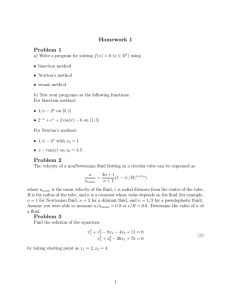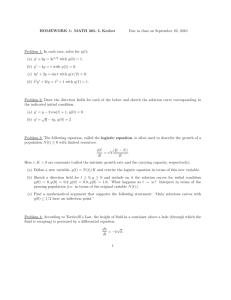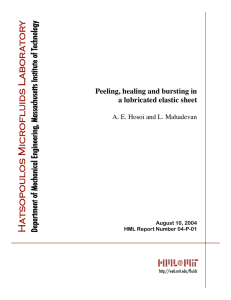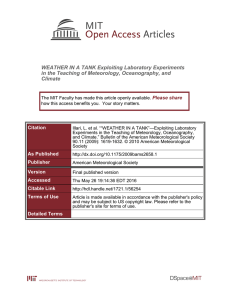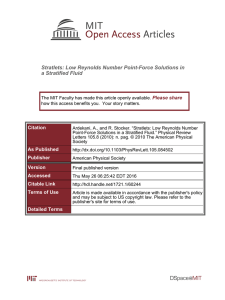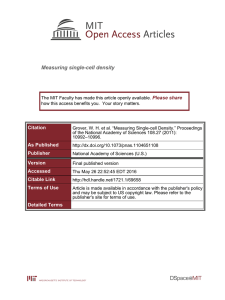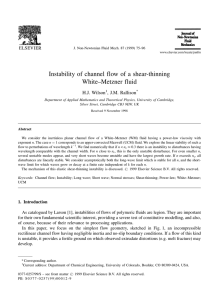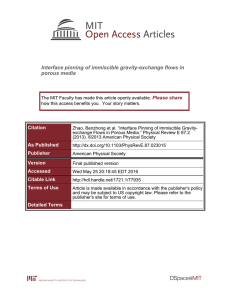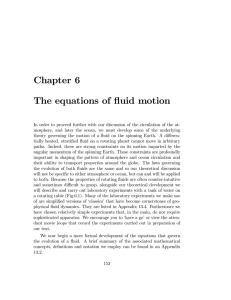Pressure Exerted by a Rotating Cylinder of Fluid—C.E. Mungan, Spring... R h
advertisement
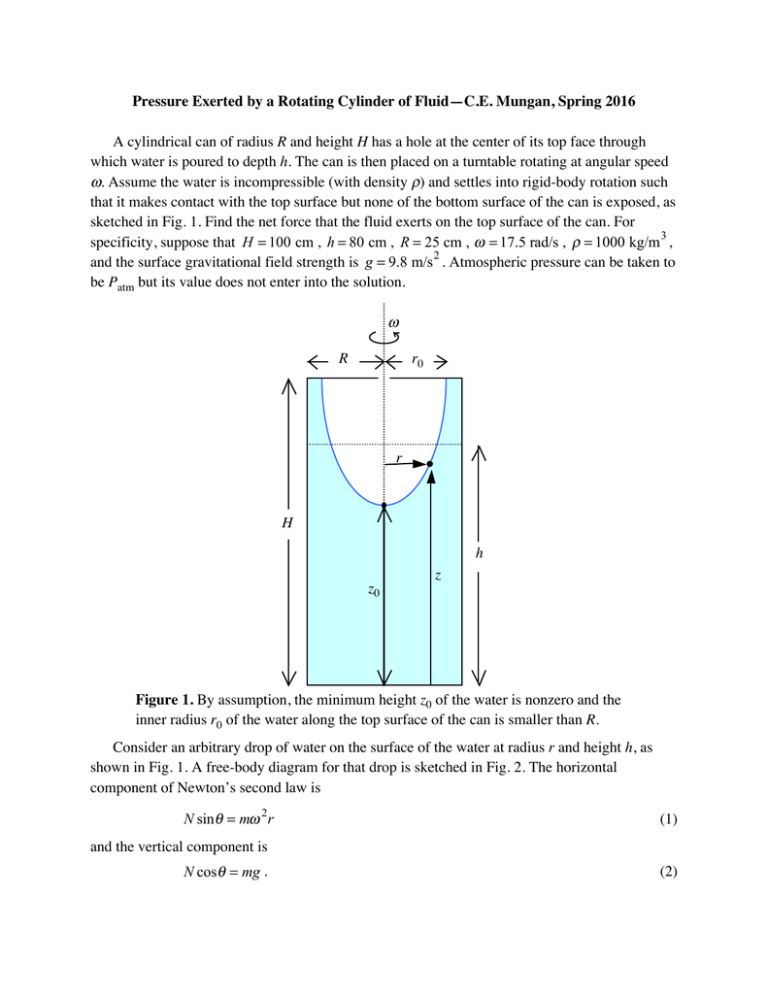
Pressure Exerted by a Rotating Cylinder of Fluid—C.E. Mungan, Spring 2016 A cylindrical can of radius R and height H has a hole at the center of its top face through which water is poured to depth h. The can is then placed on a turntable rotating at angular speed ω. Assume the water is incompressible (with density ρ) and settles into rigid-body rotation such that it makes contact with the top surface but none of the bottom surface of the can is exposed, as sketched in Fig. 1. Find the net force that the fluid exerts on the top surface of the can. For 3 specificity, suppose that H = 100 cm , h = 80 cm , R = 25 cm , ω = 17.5 rad/s , ρ = 1000 kg/m , 2 and the surface gravitational field strength is g = 9.8 m/s . Atmospheric pressure can be taken to be Patm but its value does not enter into the solution. ω R r0 r H h z0 z Figure 1. By assumption, the minimum height z0 of the water is nonzero and the inner radius r0 of the water along the top surface of the can is smaller than R. Consider an arbitrary drop of water on the surface of the water at radius r and height h, as shown in Fig. 1. A free-body diagram for that drop is sketched in Fig. 2. The horizontal component of Newton’s second law is N sin θ = mω 2r (1) and the vertical component is N cosθ = mg . (2) N θ θ ac mg Figure 2. A water drop of mass m experiences gravitational force mg and normal force N due to the surrounding water perpendicular to the surface tilted at angle θ 2 to the horizontal. The centripetal acceleration of the drop is ac = ω r . Dividing Eq. (1) by (2) gives ω 2r dz = tan θ = g dr (3) which separates and integrates into the familiar parabolic surface profile ω 2r 2 z= + z0 . 2g (4) Conservation of the volume of water before and after rotating the can implies that r0 R 0 r0 hπ R = ∫ z 2π r dr + ∫ H 2π r dr 2 = 2 ( ) (5) πω 4 r + z0π r02 + H π R 2 − r02 . 4g 0 However, Eq. (4) evaluated at the intersection between the water surface and the top surface of the can implies ω 2r02 z0 = H − 2g (6) and substituting that into Eq. (5) results in 4 r0 = 4gR 2 ω2 ( H − h) . (7) Next consider an arbitrary block of fluid as sketched in Fig. 3. The net difference in pressure forces in the radial direction according to Newton’s second law is equal to 2 AdP = (ω r)( ρ Adr) (8) because the quantity in the first set of parentheses is the acceleration ac, and the quantity in the second set of parentheses is the mass dm of the block. ω r P P+dP ac Figure 3. An arbitrary block of fluid of radial thickness dr and area A perpendicular to the radial direction. Now suppose the block of fluid is specifically along the top surface of the can, and integrate radially outward starting from the parabolic water surface to get P ∫ Patm r ( ) dP = ρω 2 ∫ r dr ⇒ P − Patm ≡ Pgauge = 12 ρω 2 r 2 − r02 . r0 (9) 2 That is, the fluid pressure P increases radially in proportion to the dynamic pressure ρυ / 2 where υ = rω is the speed of the fluid. Finally, the net force due to fluid pressure upward on the top of the can is ⎡ 2 g(H − h) ⎤ π π F = ∫ Pgauge 2π r dr = ρω 2 (R 2 − r02 ) 2 = ρω 2 R 4 ⎢1− ⎥ 4 4 ωR ⎢⎣ ⎥⎦ r R 2 (10) 0 using Eq. (7) in the last step. The given numerical values result in r0 = 20 cm according to Eq. (7) which is properly less than R, z0 = 37.5 cm according to Eq. (6) which is properly greater than zero, and F ≈ 122 N according to Eq. (10).

